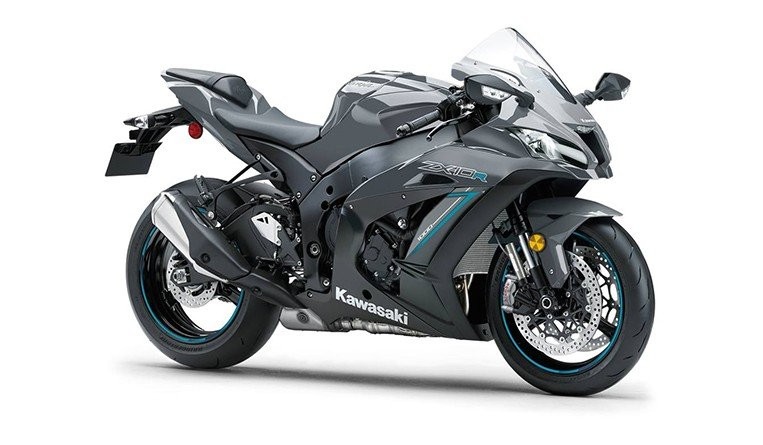The Philippines: Kawasaki Failed to Uphold Rights over Motorcycle Design
15 October 2015

In the case between Kawasaki Heavy Industries, Ltd. (KHI) and Kawasaki Motors (Phils.) Inc. (KMPC), [plaintiffs], and Eastworld Motor Industries Corp. [defendant], the Bureau of Legal Affairs (BLA) of the Intellectual Property Office of the Philippines (IPOPHL) dismissed the industrial design infringement and unfair competition complaints filed by the plaintiffs against the defendant’s manufacture and sale of Sapphire 125 motorcycle (“Sapphire”), which the plaintiffs alleged to have infringed its Industrial Design Registration Nos. 3-2008-000715 and 3-2008-000718 (Design Registrations ’715 and ‘718).
Background
The plaintiffs manufacture and sell a wide variety of motorcycles, spare parts and motorcycle accessories.
KHI holds Design Registrations ’715 and ’718 with the IPOPHL which were registered on February 9, 2009.These design registrations cover the design of the plaintiffs’ newest motorcycle, Fury 125 (Fury), which was launched in 2008.
The plaintiffs learned that the defendant also manufactured and sold a motorcycle model, Sapphire, which was launched in March 2009. The plaintiffs alleged that Sapphire bears nearly all of Fury’s design elements.
The plaintiffs, therefore, filed industrial design infringement and unfair competition complaints against the defendant for the manufacture and sale of Sapphire, whose design the plaintiffs claimed to resemble the design of Fury as indicated in their Design Registrations ’715 and ’718.
The defendant denied the plaintiffs’ allegations arguing that the Sapphire design is substantially different from the Fury design and that they hold a valid Industrial Design Registration No. 3-2009-00062 (Design Registration ’62), which covers the Sapphire design.
The plaintiffs claimed that the Sapphire design was similar to the design covered by its Design Registrations ’715 and ’718.
The plaintiffs presented photographs and actual samples of Fury and Sapphire motorcycles and testimonies from the officers of KHI and KMPC comparing both designs of motorcycles.
The plaintiffs also submitted in court delivery receipts and sales invoice of the Sapphire motorcycle. The plaintiffs’ witnesses testified that there was substantial similarity of several parts of Fury and Sapphire and that, in fitting the Sapphire plastic parts into the inspection jig used for Fury, almost all plastic parts and fuel tank fit.
The plaintiffs alleged that their Design Registrations ’715 and ’718 were issued a year prior to the launching of Sapphire. The plaintiffs also submitted evidence that the defendant sold Sapphire prior to the date of registration of the defendant’s Design Registration ’62.
In view thereof, the plaintiffs then filed an industrial design infringement case with the BLA of the IPOPHL. The plaintiffs also filed an unfair competition complaint, alleging that the defendant employed deception and other means contrary to good faith in passing off its motorcycles. The defendant contended that the design of the Sapphire motorcycle was covered by Design Registration ‘62, which was issued in its favor on May 4, 2009.
The defendant’s witness said that there are substantial differences in the functionality and design elements of some parts of the motorcycles. Hence, the defendant submitted that the infringement and unfair competition complaints filed by the plaintiff are unfounded.
The BLA Decision
The BLA ruled that the main test for substantial identity of design is the overall appearance of the object and the similarity of its effect upon the eye.
To an ordinary observer, the overall design of Sapphire is not substantially similar to the Fury design. The designs are not identical taking into consideration the contour, shape and design as a whole. A casual observation of the designs shows glaring differences.
The BLA ruled that unfair competition cannot be applied in the case of patent infringement. The BLA held that there is no bad faith or fraud on the part of the defendant since its Sapphire motorcycle is based on a valid Design Registration ’62 and consumers can easily distinguish one product from the other.
The BLA also ruled that, although the defendants started selling Sapphire as early as March 2009, which was prior to the issuance of Design Registration ‘62 in May 2009, the protection to the design retroacts to the date of filing of the design application once the design is registered.
Further, the BLA cited that the plaintiffs failed to file any adverse information or a petition to cancel the Design Registration ’62, which the plaintiffs could have done if it wanted to question the validity of defendant’s registration. Hence, the BLA ruled that the defendant cannot be held liable for design infringement and/or unfair competition, and therefore dismissed both complaints filed by the plaintiffs.
Conclusion
This case has shown the importance for the plaintiffs to institute proceedings to revoke the defendant’s existing industrial design registration in order to reinforce a design infringement case against the defendant. Also, this case goes to show that not all designs that seem similar or identical to a registered design automatically result in infringement of the registered design.







